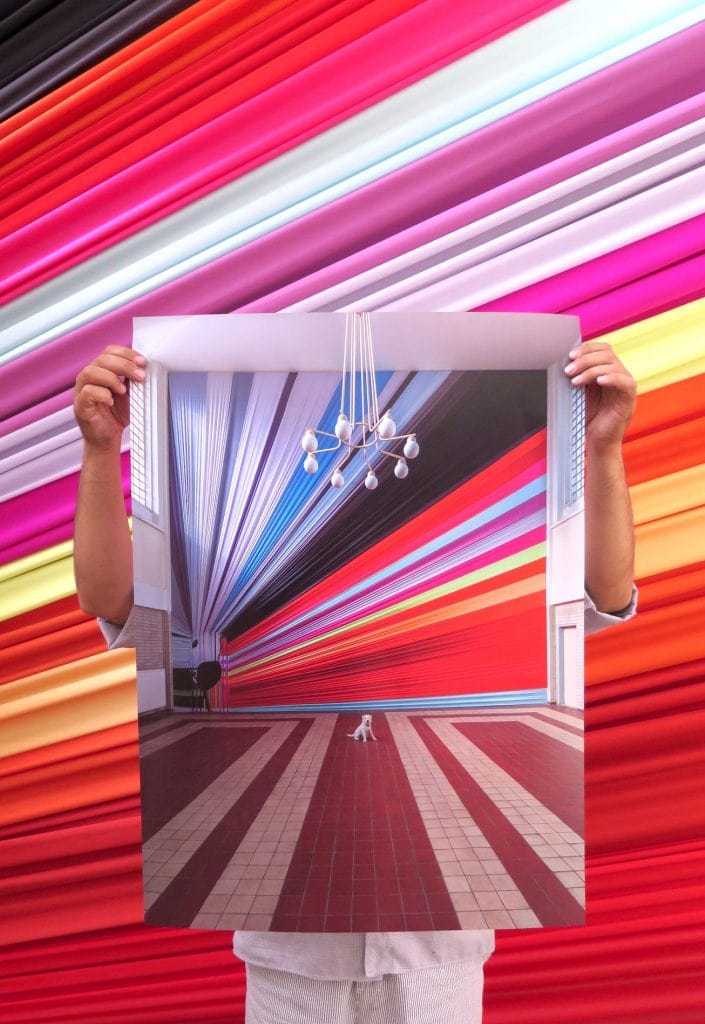This text was originally published in Flash Art CZ/SK, September 2017.
Anetta Mona Chişa and Lucia Tkáčová, Banska St a nica
“When Alexander of Macedonia was 33, he cried salt tears because there were no more worlds to conquer… Eric Bristow’s only 27.” This infamous line, delivered live on air by BBC sports commentator Sid Waddell in reaction to Bristow’s win of a darts tournament, is synonymous with a particular brand of self-mocking hubris. A similar darts game might be taking place in central Slovakia: it took 47000 volunteers two years to build the 21km long Railway of Youth line to Banská Štiavnica… Anetta Mona Chişa and Lucia Tkáčová have in one gesture created a departure place for all journeys.

As the 2017 commission by Banska St a nica for the now sleepy train terminus, a 1950s symbol of past industry, prosperity and hope, Chişa and Tkáčová have covered the station waiting hall with a monumental textile installation. A rainbow of coloured streams emanates from an abstractly-patterned door that resembles a damaged mobile phone screen. This composition brings to mind 20th century propaganda landscapes in which the sun, synonymous with the political leadership, brings all kind of enlightenment and wealth to everyone who cares to bathe in its rays. The rainbow arrangement in Chişa and Tkáčová’s Prophecy of Things sits comfortably with the optimism remnant in the in the Modernist architecture of the train station, signalling a future that’s nominally bright and uninterruptible, even though its source is ultimately corrupt and doesn’t offer much useful information.
Chişa and Tkáčová are no strangers to hyperbolae. In their practice, potent symbols and humble objects have swapped places or abandoned their functions, utopias and realities coexist as thought without syntactic conflict. Here also, the monumental form of the work overrides questions of any specific conflict, difficulty or discomfort, insisting that its aesthetic value alone is more than enough to go on with. I have followed Chişa and Tkáčová’s work in formal institutional contexts for some years, but this is the first time I saw them in action close to home, in situ. It doesn’t matter that that darts are a minority interest, nor that they make very poor television.

